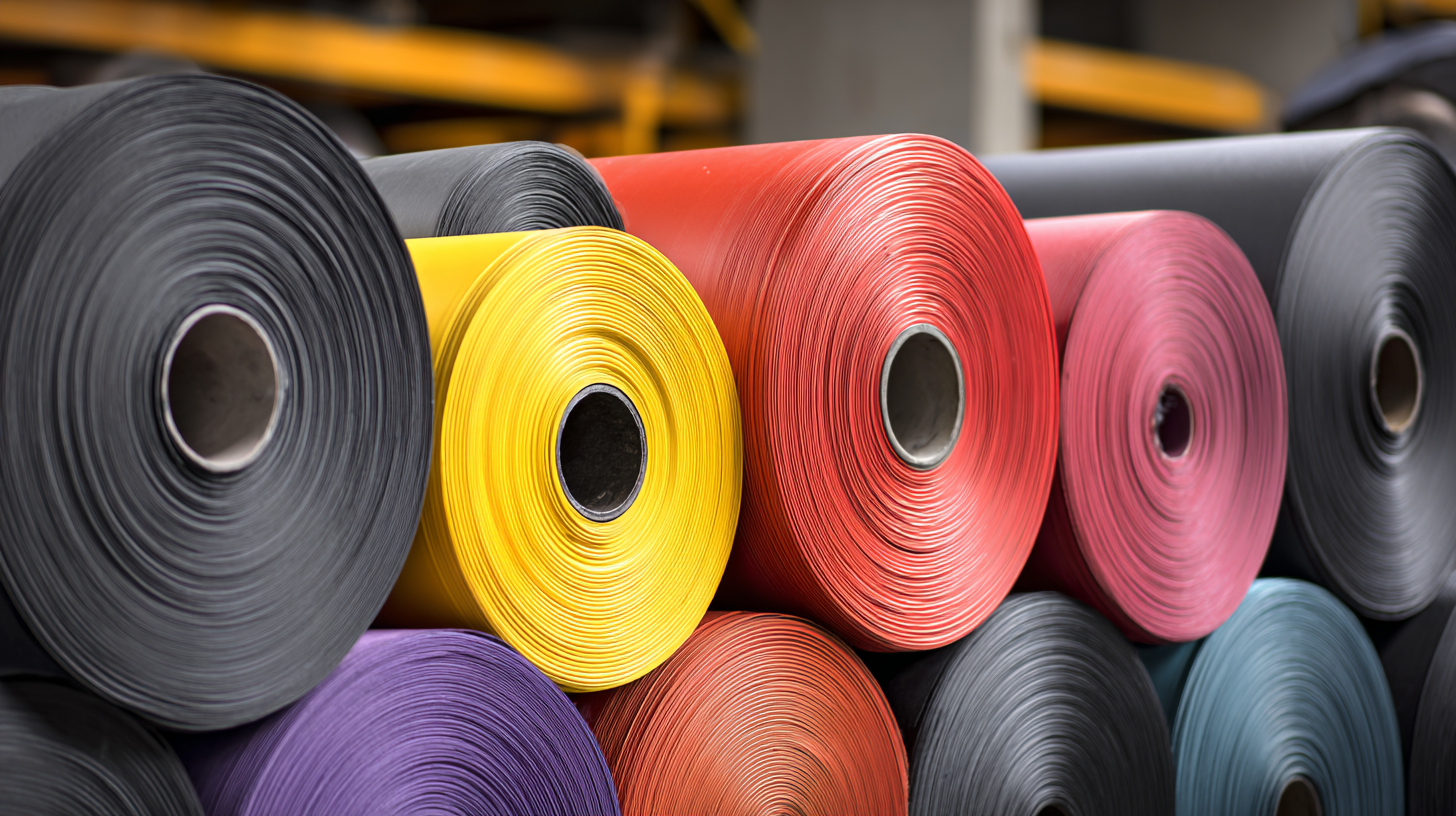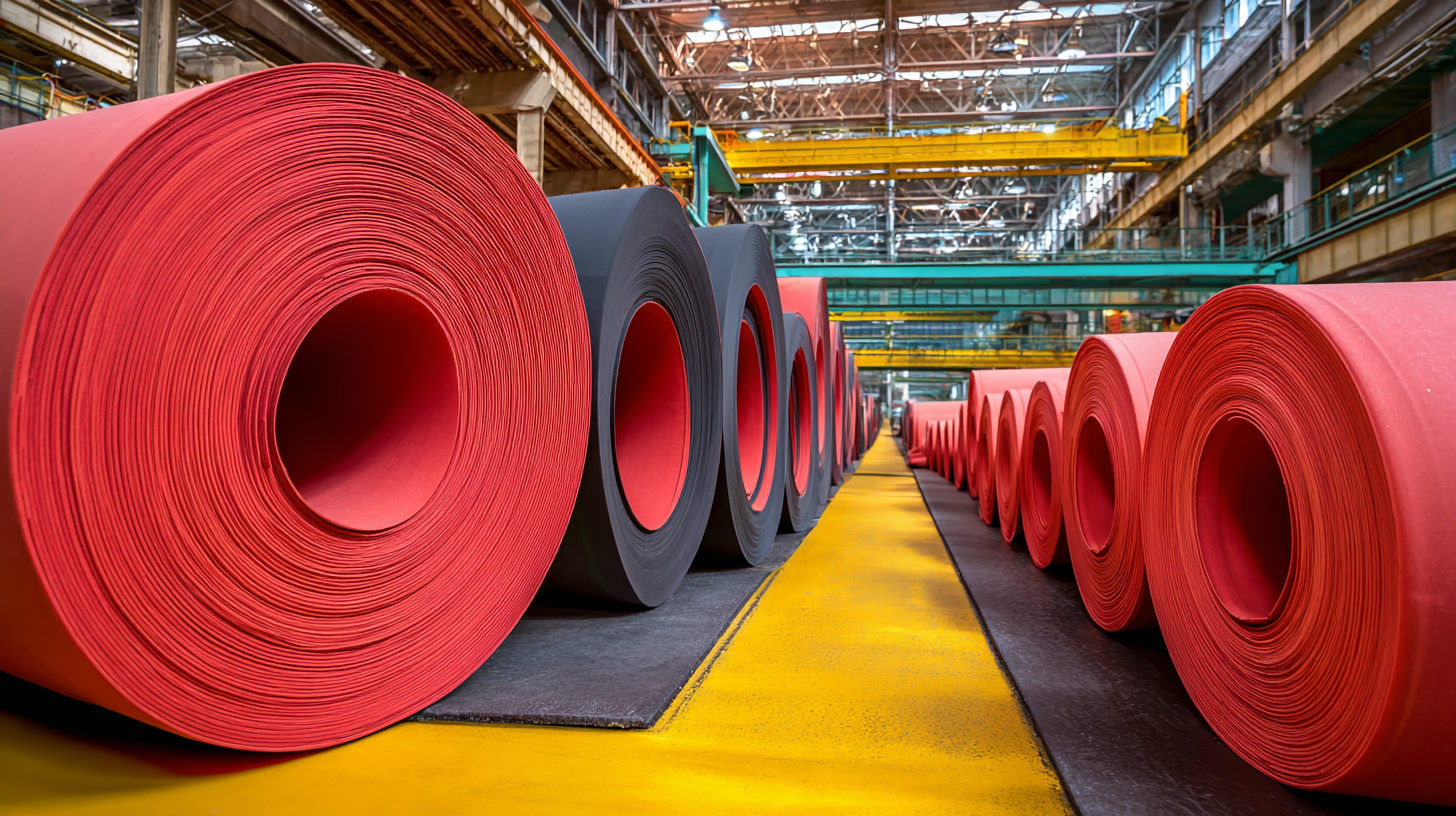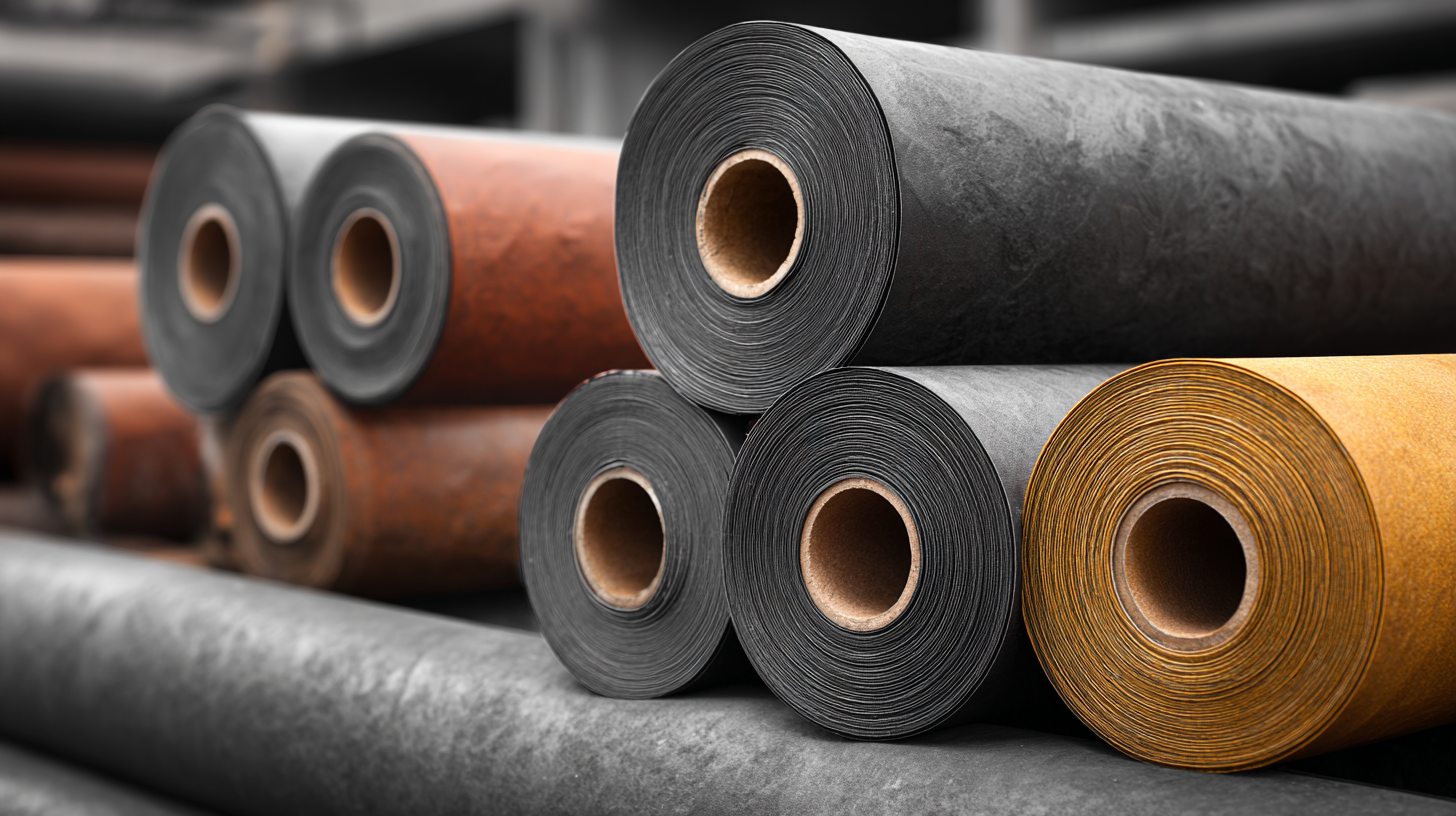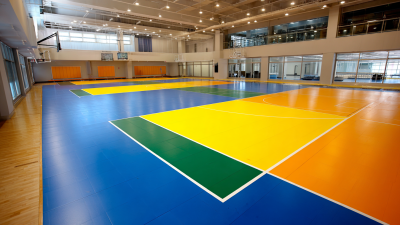
-
Home
-
About Us
-
Products
-
Solution
-
Accessories Service
-
Technicial Service
-
Additional Service
-
News
-
Blog
-
Contact Us
Leave Your Message

Selecting the right Rubber Roll for your industry needs is a critical decision that can significantly impact efficiency and productivity. According to a report by Smithers, the global rubber product market is expected to reach $34 billion by 2024, driven by the increasing demand across various sectors such as automotive, aerospace, and manufacturing. With advancements in rubber technology and a growing emphasis on sustainability, industries are required to adapt and choose rubber rolls that not only meet operational demands but also comply with environmental standards. Understanding the specific requirements of your application—be it durability, flexibility, or compatibility with different materials—will play a pivotal role in ensuring optimal performance. This blog aims to provide insights and guidance on how to select the appropriate Rubber Roll tailored to your unique industry needs, ensuring your processes run smoothly and efficiently.

When selecting the appropriate rubber roll for your industry, it is crucial to understand the various types available and their specific applications. Rubber rolls come in diverse formulations, including natural rubber, synthetic rubber, and specialized compounds. According to a report by the Global Rubber Market Research Group, the demand for synthetic rubber is projected to grow at a CAGR of 4.5% from 2023 to 2028, driven by industries such as automotive and manufacturing that require high-performance materials.
Different industries have distinct requirements that make certain rubber rolls more suitable than others. For example, in the printing industry, chrome-plated rubber rolls are favored due to their durability and ability to provide high-quality impressions. Meanwhile, food processing facilities often utilize non-toxic, FDA-approved rubber rolls, ensuring compliance with health standards while maintaining efficiency. Furthermore, a recent study published in the International Journal of Materials Management highlights that the choice of the right rubber roll can enhance operational reliability by up to 30%, underscoring the importance of selecting the right material for the intended application. Understanding these differences is key for industries aiming to improve productivity and quality.
| Type of Rubber Roll | Material Composition | Typical Applications | Durometer Hardness (Shore A) | Temperature Resistance (°F) |
|---|---|---|---|---|
| Natural Rubber Roll | Natural rubber latex | Printing, packaging, and general industrial | 40-90 | -20 to 180 |
| Neoprene Rubber Roll | Chloroprene rubber | Automotive, marine, and construction | 40-80 | -20 to 220 |
| EPDM Rubber Roll | Ethylene propylene diene monomer | Weather stripping, seals, and roofing | 60-90 | -40 to 250 |
| Silicone Rubber Roll | Silicone polymer | Food processing, medical, and electronics | 30-80 | -100 to 500 |
| Polyurethane Rubber Roll | Polyurethane elastomer | Material handling, conveyor systems, and flooring | 70-95 | -10 to 180 |
 When selecting rubber rolls for your industry, several key factors come into play that can significantly impact your operations. First and foremost, consider the type of application the rubber roll will serve. Different industries, from printing to agriculture, require specific characteristics, such as hardness, resilience, and durability. Therefore, understanding the demands of your application is crucial for making the right choice.
When selecting rubber rolls for your industry, several key factors come into play that can significantly impact your operations. First and foremost, consider the type of application the rubber roll will serve. Different industries, from printing to agriculture, require specific characteristics, such as hardness, resilience, and durability. Therefore, understanding the demands of your application is crucial for making the right choice.
Another important factor is the material composition of the rubber roll. Various compounds provide distinct benefits depending on the environment they will be used in. For example, if your industry involves exposure to extreme temperatures or chemicals, choosing a rubber roll with a high resistance to such elements can increase the lifespan of your equipment. Additionally, thickness and surface texture can also influence performance, so it’s wise to match these specifications to your unique requirements.
Tips: Always test samples before committing to a large order; this will help you assess how well a particular rubber roll performs in your specific application. Moreover, consulting with suppliers about the latest developments in rubber technology can give you insights into innovative options that may enhance your operational efficiency. Remember that the right rubber roll not only improves productivity but also reduces costs in the long run.
When it comes to selecting the right rubber roll for your industry, evaluating durability and performance characteristics is paramount. According to a recent study by the Rubber Manufacturers Association, rubber products with a higher durometer hardness tend to last longer under pressure, making them ideal for applications in heavy machinery and conveyors. Durability is influenced not only by the material composition but also by the manufacturing process, which can significantly affect the overall life span of rubber rolls.
Tip: Consider the working environment of the rubber roll. High-temperature settings may require specific rubber compounds that are resistant to deformation. For instance, a report from the American Society for Testing and Materials (ASTM) reveals that nitrile rubber can withstand temperatures up to 120°C (248°F), making it suitable for automotive and industrial applications.
Performance characteristics, such as resistance to abrasion and chemical exposure, should also be taken into account. Research indicates that EPDM rubber rolls offer exceptional resistance to UV rays and Ozone, making them a great choice for outdoor applications. Additionally, according to industry benchmarks, rubber rolls that have been tested for tensile strength can provide operators with valuable insights into performance longevity.
Tip: Always request performance data sheets and sample testing results from suppliers to ensure that the rubber rolls meet your specific industry requirements.
When selecting rubber rolls for specific industrial applications, customization is key in achieving optimal performance and efficiency. Different industries have unique demands, whether it’s in the food processing sector requiring high hygienic standards and FDA compliance, or the automotive industry that often needs specialized textures and hardness. Understanding the requirements of your specific industry is crucial as it guides the selection of materials, dimensions, and surface finishes for rubber rolls.
Customization options can vary widely, allowing industries to fine-tune their rubber rolls to meet operational needs. For instance, certain applications might require antimicrobial properties to ensure products are safe for consumers, while others may benefit from rolls with enhanced grip for better material handling. Additionally, fabricating rubber rolls with specific durometers can improve friction and performance in high-speed machinery. By exploring these tailored options, businesses can enhance their productivity, reduce downtime, and maintain superior quality in their respective operations.
When selecting the right rubber roll for your industry needs, cost considerations play a crucial role in ensuring you strike a balance between quality and budget. According to a report by Smithers Pira, the global rubber market is expected to reach $185 billion by 2024, largely driven by the demand in manufacturing and logistics. Thus, understanding the cost versus quality paradigm is essential for businesses looking to invest in durable rubber rolls without overspending.
Investing in high-quality rubber rolls can lead to significant long-term savings, as they tend to exhibit superior resilience and longevity. A study published by Research and Markets emphasizes that companies often face repair and replacement costs that can range 20-30% of their initial purchase price if they choose lower-quality products. To optimize expenditures, industries should consider the specific operational demands and potential wear and tear on these rolls, ultimately leading to a strategic decision that safeguards their budget while adhering to quality standards.






